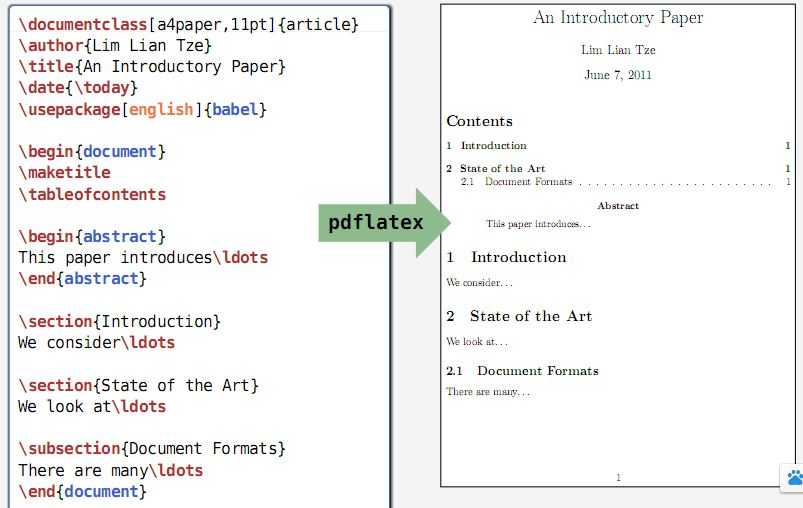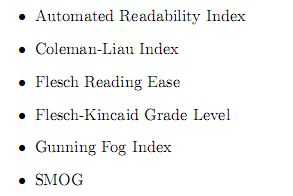标签:
在写论文,甚至有些课程的报告的时候,latex是常用的工具。这篇博文简单的记录了latex常用的一些内容。
1 基本模块
没用过latex的读者,最想问的问题莫过于latex的 “hello world”程序长什么样。那么下面就贴一张图片来展示:

latex就是通过一些列指令来控制排版的。 一些一目了然的参数我就不解释了。第一行的\documentclass{article},article就是指一般的文档格式。可以换成,其他的,比如book,就是书的版式,分成很多章节chapter,还有一些论文的版式,例如IEEEtran,sig-alternate,这两种都是一页分两列的,看着很高端。
%这是我的一个作业报告的前奏部分
\documentclass[a4paper,11pt]{article} \author{leavingseason} \title{Hello World} \date{\today} \usepackage[english]{babel} \usepackage{hyperref} \usepackage{amsmath} \usepackage{graphicx} \usepackage{bm} \usepackage{xcolor} \usepackage{float} \usepackage{geometry} \geometry{left=2.5cm,right=2.5cm,top=2.5cm,bottom=2.5cm}
\usepackage指需要使用一些宏包。 交代封面和版式的指令完之后,就开始了文档内容。用\begin{document} 和\end{document} 包围起来。 里面可以有摘要,很多个section等等常见的东西。
好了,大体上latex的流程就是这样。下面,我们要做的,就是实际中需要用哪些东西,再亡羊补牢。
2 常用命令
2.1一篇文章通常很长。那么就需要把它分成多个子文件。每个文件都是以.tex为后缀,用命令\input 或者\include 把它们添加进主文件中。
\input{introduction}
\input{model1}
\input{model2}
\input{model3}
\input 在插入子文件的时候不换页,\include在插入子文件的时候强制换页
2.2 引用参考文献
\bibliographystyle{plain}
\bibliography{bib/tex}
把参考文献写入一个以.bib为后缀名的文件中,例如bib/tex.bib,然后用上面的两条语句就可以了。.bib文件的内容如下
@article{KDE,
title = {Estimating the helpfulness and economic impact of product reviews: Mining text and reviewer characteristics},
author = {Ghose, Anindya and Ipeirotis, Panagiotis G},
journal = {Knowledge and Data Engineering, IEEE Transactions on},
volume = {23},
number = {10},
pages = {1498--1512},
year = {2011},
publisher = {IEEE}
}
@inproceedings{ICDM,
title={Modeling and predicting the helpfulness of online reviews},
author={Liu, Yang and Huang, Xiangji and An, Aijun and Yu, Xiaohui},
booktitle={Data Mining, 2008. ICDM‘08. Eighth IEEE International Conference on},
pages={443--452},
year={2008},
organization={IEEE}
}
@inproceedings{ICEC,
title={Designing novel review ranking systems: predicting the usefulness and impact of reviews},
author={Ghose, Anindya and Ipeirotis, Panagiotis G},
booktitle={Proceedings of the ninth international conference on Electronic commerce},
pages={303--310},
year={2007},
organization={ACM}
}
获取这样的内容有一个小技巧:在谷歌学术中输入你要引用的论文名字,然后点开“引用”那个链接,再点击"导入BibTeX",引用的格式就出来了。
@article{KDE,article={}... 在这个命令中,KDE是这篇引用文章的索引号,是你自己定义的。在你的正文中要引用他的话,就用 \cite{KDE}
值得注意的是,如果你的正文没有引用该文章,那么即使在.bib中有该文章的信息,生成的pdf的reference列表中也不会有该文章的。
2.3 章节
\section{model1}, \subsection{...}, \subsubsection{...}等等
2.5 缩进
每段开头想要缩进,或者不要缩进: \indent \noindent
2.6 换行: \\
2.7 数学公式
记得用$ $把公式的内容包围起来,或者用 \begin{equation} \end{equation} 。 公式中粗体表示向量,用\mathbf{}:
\begin{equation}\label{eq:rbf}
\phi(\mathbf{x}|\mathbf{\mu},\Sigma) = f(\frac{(\mathbf{x}-\mathbf{\mu})^T(\mathbf{x}-\mathbf{\mu})}{\sigma^2})
\end{equation}
指数用 ^{指数部分}, 下标用 _{下标部分} , 分数用 \frac{分子}{分母} , WinEdit 上也有很好用的快捷按钮:

2.8 列表
\begin{enumerate}
\item ..
\item ..
\end{enumerate}
这个是带序号的列表。 把enumerate 换成itemize, 就是不带序号的。例如:

2.9 插入图片:
\begin{figure}[htbp]
\centering
\includegraphics[width=0.8\textwidth]{pic/timeliness.JPG}
\caption{An example of review helpfulness vs. time of review.}
\label{fig:timeliness}
\end{figure}
要引用图片的时候,就用 \ref{fig:timeliness}
转自:http://www.cnblogs.com/sylvanas2012/archive/2013/05/28/3102880.html
标签:
原文地址:http://www.cnblogs.com/aoublog/p/4469635.html